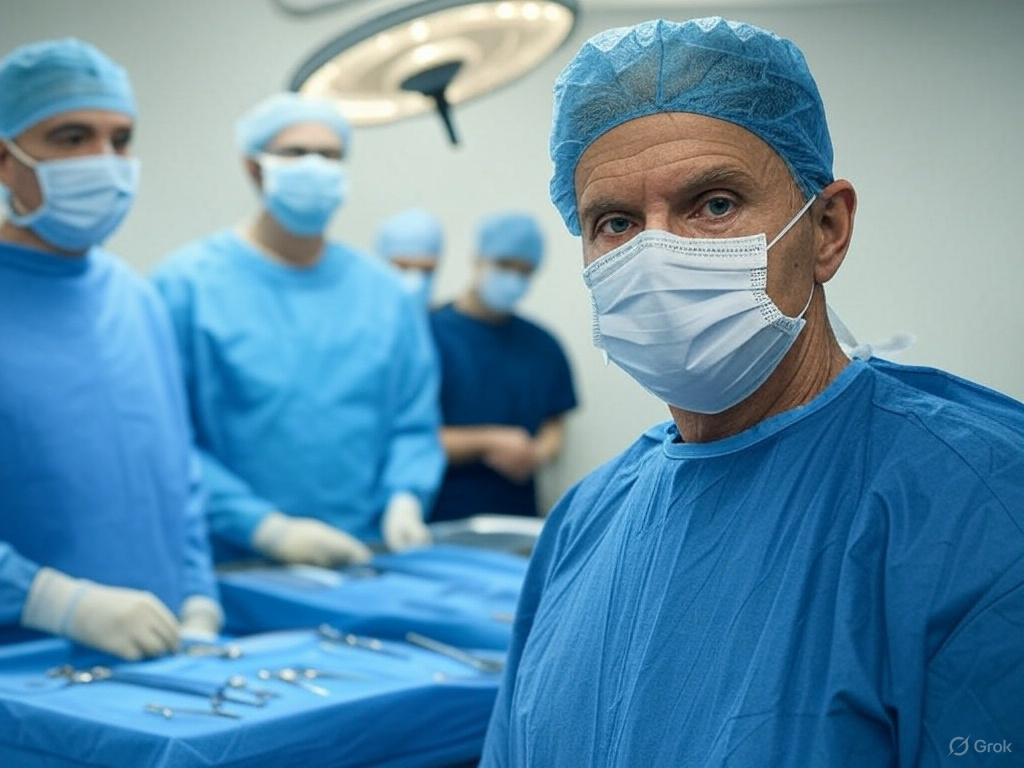How an Intragastric Balloon is Done
The intragastric balloon procedure is a non-surgical weight-loss treatment that helps individuals reduce food intake and develop healthier eating habits. The balloon is placed in the stomach and filled with saline to create a feeling of fullness, leading to reduced calorie consumption.
In this guide, we will explain the entire procedure, from pre-procedure preparations to the balloon placement and aftercare.

Step 1: Preparing for the Procedure
Before undergoing the intragastric balloon procedure, patients must follow a specific preparation process. This includes:
- Medical evaluations to determine eligibility.
- Dietary changes to prepare the stomach.
- Temporary fasting for at least 12 hours before the procedure.
For a detailed guide on this step, visit our page on preparing for an intragastric balloon.
Step 2: The Balloon Placement Procedure
The placement of an intragastric balloon is a quick and minimally invasive process. It is performed as an outpatient procedure and typically takes **20 to 30 minutes**.
1. Arrival and Preparation
Upon arriving at the clinic or hospital, patients are prepared for the procedure:
- The doctor will review the patient’s medical history once again.
- Vital signs such as heart rate and blood pressure are checked.
- A mild sedative or anesthesia may be given to help the patient relax.
2. Endoscopic Insertion of the Balloon
The balloon is inserted using an **endoscope**, a thin, flexible tube equipped with a camera and light. This allows the doctor to guide the balloon safely into the stomach.
"The endoscopic method ensures a safe and precise placement of the balloon with minimal discomfort for the patient." - Dr. Robert Hayes, Bariatric Surgeon
3. Filling the Balloon with Saline Solution
Once inside the stomach, the balloon is filled with a **sterile saline solution** through a small tube attached to it. The amount of saline used varies but typically ranges from **400 to 700 ml**, depending on the patient’s needs.
As the balloon expands, it takes up space in the stomach, limiting the amount of food that can be consumed.
4. Final Positioning and Endoscopic Check
After the balloon is inflated, the doctor ensures that it is in the correct position using the endoscope. The tube used for filling is then removed, leaving the balloon to float freely in the stomach.
"A correctly placed balloon provides the best weight-loss results and minimizes potential complications." - Dr. Emily Carter, Nutritionist
Step 3: Recovery and Immediate Aftercare
Since the procedure is non-surgical, recovery is usually quick. However, patients may experience mild side effects as their body adjusts to the balloon.
Common Side Effects After Placement
- Nausea and vomiting (common in the first 24-72 hours).
- Abdominal cramps or discomfort.
- Acid reflux or bloating.
These symptoms are temporary and usually subside within a few days. Medications may be prescribed to manage nausea and discomfort.
Step 4: Adjusting to the Balloon
During the first week, patients are advised to follow a **liquid diet** to allow the stomach to adapt to the balloon. Gradually, soft and solid foods are reintroduced.
Recommended Diet Progression
- Days 1-3: Clear liquids such as water, broth, and herbal tea.
- Days 4-7: Blended foods and protein shakes.
- Week 2 onwards: Soft foods followed by solid meals in small portions.
Step 5: The Balloon Removal Process
The intragastric balloon is a temporary solution and must be removed after **6 months** (or up to 12 months for certain types of balloons).
Removal Procedure
Similar to placement, removal is performed endoscopically. The steps include:
- A mild sedative is given to relax the patient.
- The doctor inserts an endoscope to puncture the balloon and remove the saline solution.
- Once deflated, the balloon is carefully extracted through the mouth.
"The removal process is simple and safe, ensuring the stomach returns to its normal state without complications." - Dr. Sophia Bennett, Bariatric Specialist
Step 6: Maintaining Weight-Loss Success
For long-term success, patients must continue to follow a **healthy diet and exercise plan** after balloon removal.
Key Lifestyle Changes
- Eating smaller, more frequent meals.
- Maintaining a high-protein, low-calorie diet.
- Engaging in regular physical activity.
- Attending follow-up appointments with a dietitian or doctor.
Comparing the Intragastric Balloon to Other Procedures
The intragastric balloon is an effective option for patients who do not want to undergo surgery. However, other weight-loss procedures are available, such as:
- Gastric Bypass – A permanent surgical solution that alters the digestive system.
- Gastric Sleeve – A procedure that removes a portion of the stomach to reduce food intake.
- Gastric Banding – A reversible procedure using an adjustable band around the stomach.
Final Thoughts: Is an Intragastric Balloon Right for You?
The **intragastric balloon** is a highly effective, non-surgical option for weight loss. It helps patients lose **10-15% of their body weight** within six months when combined with lifestyle changes.
If you are struggling with obesity and looking for a non-invasive weight-loss solution, the intragastric balloon might be the right choice for you.
For more details or to schedule a consultation, visit: www.intragastric-balloon.com/contact.
Thank you for visiting www.intragastric-balloon.com—your trusted source for weight-loss solutions.
The information provided on intragastric-balloon.com is intended for general informational purposes and should not be considered a substitute for professional medical advice, examination, diagnosis, or treatment by a qualified healthcare provider. The content on intragastric-balloon.com is not intended for use in self-diagnosis or self-treatment. For more information see the detailed disclaimer.
